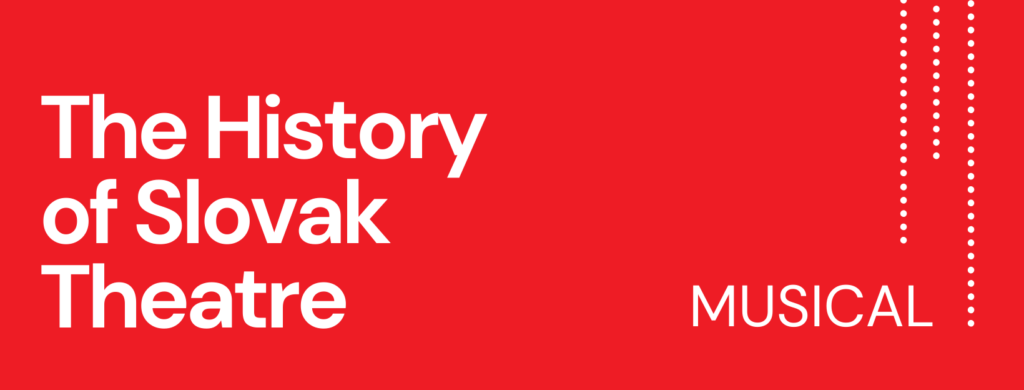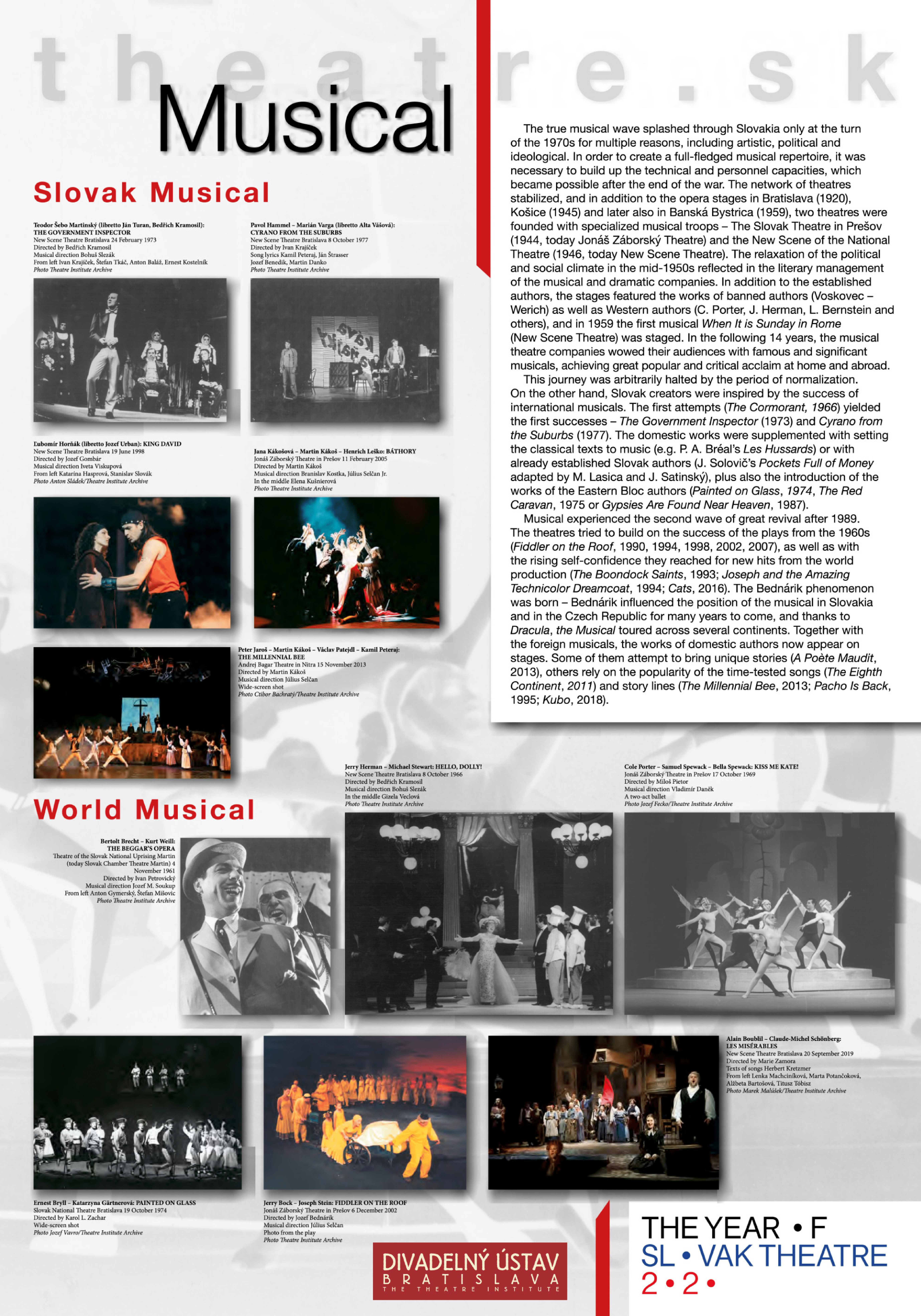
The History of Slovak Theatre – 9. Musical
The true musical wave splashed through Slovakia only at the turn of the 1970s for multiple reasons, including artistic, political and ideological. In order to create a full-fledged musical repertoire, it was necessary to build up the technical and personnel capacities, which became possible after the end of the war. The network of theatres stabilized, and in addition to the opera stages in Bratislava (1920), Košice (1945) and later also in Banská Bystrica (1959), two theatres were founded with specialized musical troops – The Slovak Theatre in Prešov (1944, today Jonáš Záborský Theatre) and the New Scene of the National Theatre (1946, today New Scene Theatre). The relaxation of the political and social climate in the mid-1950s reflected in the literary management of the musical and dramatic companies. In addition to the established authors, the stages featured the works of banned authors (Voskovec – Werich) as well as Western authors (C. Porter, J. Herman, L. Bernstein and others), and in 1959 the first musical When It is Sunday in Rome (New Scene Theatre) was staged. In the following 14 years, the musical theatre companies wowed their audiences with famous and significant musicals, achieving great popular and critical acclaim at home and abroad.
This journey was arbitrarily halted by the period of normalization. On the other hand, Slovak creators were inspired by the success of international musicals. The first attempts (The Cormorant, 1966) yielded the first successes – The Government Inspector (1973) and Cyrano from the Suburbs (1977). The domestic works were supplemented with setting the classical texts to music (e.g. P. A. Bréal’s Les Hussards) or with already established Slovak authors (J. Solovič’s Pockets Full of Money adapted by M. Lasica and J. Satinský), plus also the introduction of the works of the Eastern Bloc authors (Painted on Glass, 1974, The Red Caravan, 1975 or Gypsies Are Found Near Heaven, 1987).
Musical experienced the second wave of great revival after 1989. The theatres tried to build on the success of the plays from the 1960s (Fiddler on the Roof, 1990, 1994, 1998, 2002, 2007), as well as with the rising self-confidence they reached for new hits from the world production (The Boondock Saints, 1993; Joseph and the Amazing Technicolor Dreamcoat, 1994; Cats, 2016). The Bednárik phenomenon was born – Bednárik influenced the position of the musical in Slovakia and in the Czech Republic for many years to come, and thanks to Dracula, the Musical toured across several continents. Together with the foreign musicals, the works of domestic authors now appear on stages. Some of them attempt to bring unique stories (A Poète Maudit, 2013), others rely on the popularity of the time-tested songs (The Eighth Continent, 2011) and story lines (The Millennial Bee, 2013; Pacho Is Back, 1995; Kubo, 2018).
This is an online version of exhibition theatre.sk.


